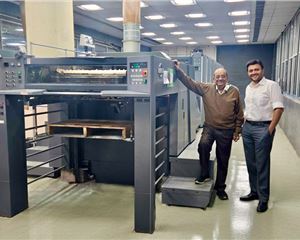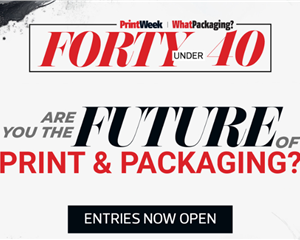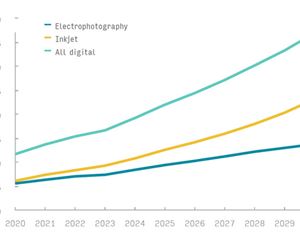How AI is rewriting print, content, and customer love
In his new book, Make Them Love It! An AI-Driven Digital Transformation Guide, author Sameer Sankhe explains how AI is turning print + content into India’s next growth engine. In this special write-up exclusively for PrintWeek readers, he offers a glimpse into what the book contains
05 Sep 2025 | By PrintWeek Team
“Will AI take my job — or hand me a better one?” That’s what Aarti, who runs a 60‑person print and packaging plant in Navi Mumbai, asked herself on a stormy Tuesday. A beverage client wanted a short-run across seven SKUs — each with a QR, each with different compliance panels — to be delivered in 24 hours. Instead of pulling an all‑nighter, her team tried a new “buddy”: an AI preflight that flagged barcode contrast issues, suggested die‑line fixes, and auto‑generated a first‑cut imposition. By noon, proofs were out. By evening, the press was humming. The next morning, the brand’s pack scans outperformed their Instagram ads.
Aarti stopped asking whether AI would replace her people. She started asking a better question: How fast can I give every person here a smart co‑pilot?
Programmable print
Yesterday’s print job ended at dispatch. Today, the job begins there. Modern plants use AI to preflight art, optimise imposition for waste, cluster runs by substrate, and catch defects earlier on press. Meanwhile, the same inputs—SKU specs, dielines, claims, imagery—now feed a content engine that drafts the compliance copy, the one‑pager, the landing page, the retailer blurbs, alt‑text, even three social posts that match the pack. Packaging is no longer a cost line. It’s addressable media with feedback loops.
“Start with the customer experience … and work backwards.”
Disrupting habits
AI is “virtually free intelligence” on tap; the moats form when you fuse it with your workflows and your data. If a competitor can rent the same model you can, what’s left? Your purchase history, defect logs, past artwork, and the micro‑preferences of every buyer you serve. That legacy exhaust—structured and searchable—becomes a private force multiplier nobody else can copy.
“Legacy data is your hidden superpower.”
The pack became the ad
A D2C beverage brand asked for 100,000 non‑identical labels: regional language variants,
sequential offers, and a Digital Link QR that changed by batch. AI nested the odd shapes,
scheduled short runs to cut makeready, and generated a “client‑friendly” change‑log in plain English. The brand launched a microsite off the same asset pack. Two weeks later, the CMO swore off spray‑and‑pray social: Packs that click beat posts that scroll.
This is the new marriage of print motion and content motion: the first ships quality; the second ships meaning. Together, they ship growth.
What Changes on the shop floor
Pre-press goes from hunter‑gatherer to quality concierge.
Press teams spend less time fixing yesterday’s errors and more time dialing in tomorrow’s promise.
Content teams stop guessing and start drafting in minutes, spending cycles on taste, claims, and context.
Sales stops selling plates and starts selling outcomes: “same‑day, AI‑assisted proof + next‑day Content Pack.”
“Action produces information.” Launch, learn, tighten the loop.
Three moves
1 Productise a 10× promise. Pick one wow: “Upload art by 11 am; get human‑verified proof today and a ready‑to‑use Content Pack tomorrow.”
2 Wire your “brand + compliance brain.” Move brand voice, glossaries, claims, and local
label rules into a private, searchable library.
3 Treat the code on the pack like a channel. Route the QR to helpful content on day one, then experiment later without reprint.
Don’t wait for perfect. Momentum beats immaculate plans.
But what about jobs?
AI won’t replace people; people with AI will outperform people without it. A one‑year
designer can preflight like a five‑year pro; a senior art lead spends time where craft lives— judgment, taste, client trust. On the content side, juniors graduate from blank‑page panic to editing excellence.
From commodity to can’t‑switch
If you only sell ink on substrate, someone will always undercut you. If you sell outcomes that people feel—a same‑day proof that prevents a regulator’s headache; a pack that clicks into a how‑to video; a campaign born from a label—you become hard to replace. Margins rise in two places at once: less waste inside, more love outside.
Make them love it.” The product is the marketing.
Field notes from India Inc
Printers and converters: Stop leading with tonnage; lead with time‑to‑proof and first‑time‑right. Offer “connected print” bundles.
Brand & content leaders: Unify PIM/DAM with creative ops. Think in families: pack, poster, post. Build disclosure + rights into your pipeline.
Regulated categories: Use AI for drafting, not deciding. You own the claims; the machine drafts options.
SMEs: You don’t need a lab. You need a librarian. Appoint a Data Steward who curates your brand voice, label rules, and best‑performing copy.
 Sameer Sankhe on the book
Sameer Sankhe on the book
This article riffs on three ideas from my book, Make Them Love It! — Start with the customer experience … and work backwards; Action produces information; and Legacy data is your hidden superpower.
If that resonates, read Chapter 2 for the playbook on designing 10× experiences, Chapter 3 for building customer love that compounds, and the later chapters on platform dynamics and India’s digital public infrastructure for the distribution tailwind you can ride.
The question isn’t “Will AI take my job?” The better question is: “What promise can I make with AI that my competitors can’t keep without me?” In a world where every model is a link away, advantage belongs to the teams who turn presses into growth engines and packs into moments people remember. Start with one audacious promise. Keep it. Then keep going.
Make Them Love It! An AI-Driven Digital Transformation Guide
by Sameer Sankhe
Pages 300+
Price INR 490












 See All
See All